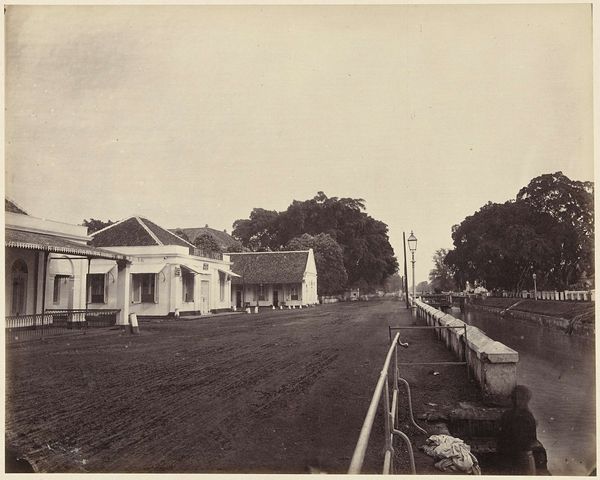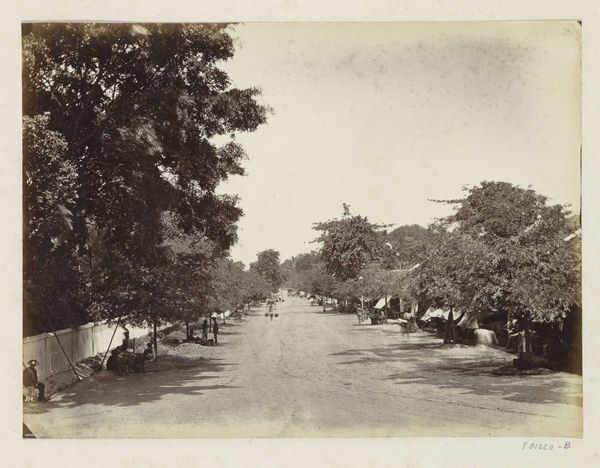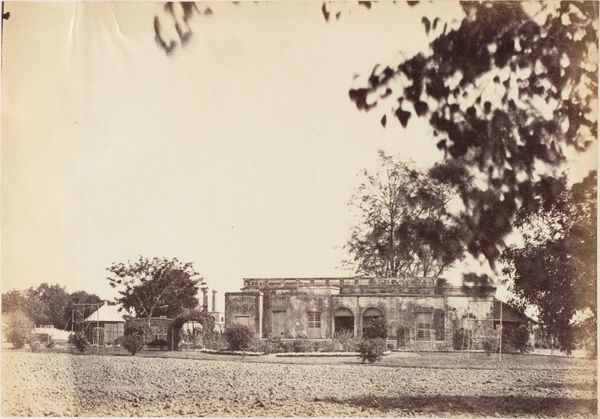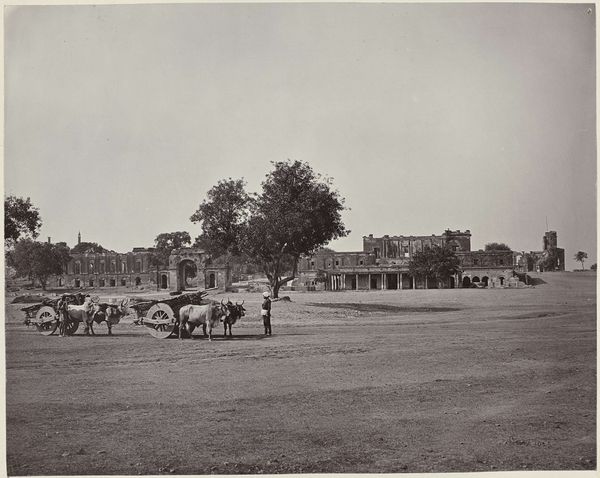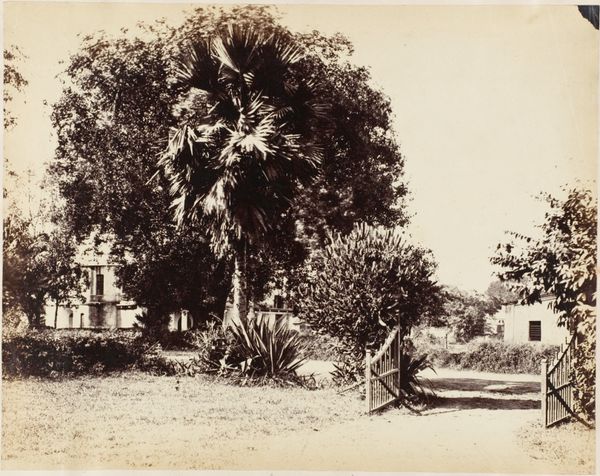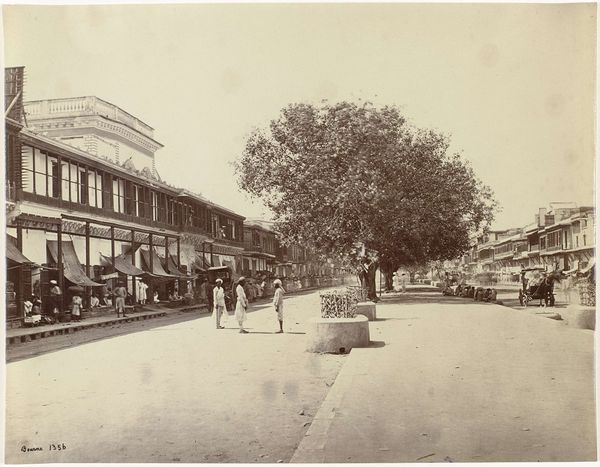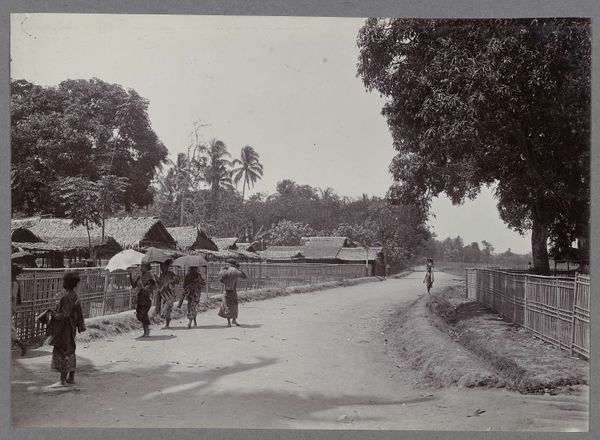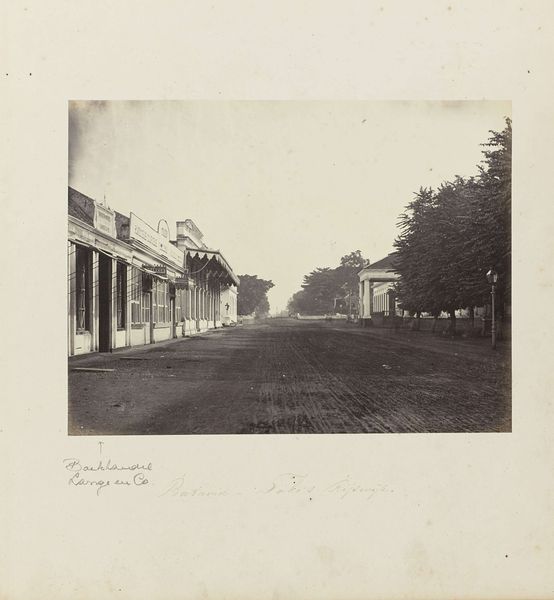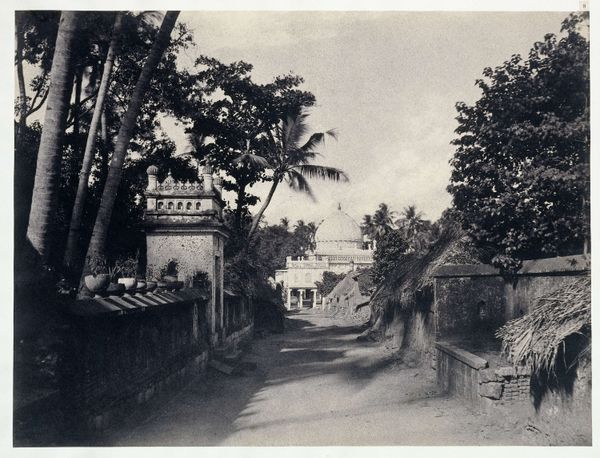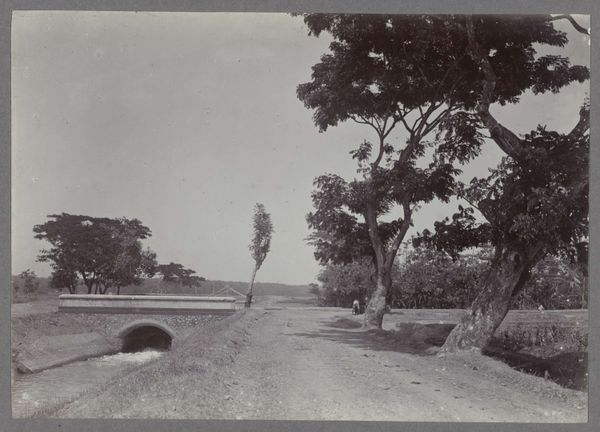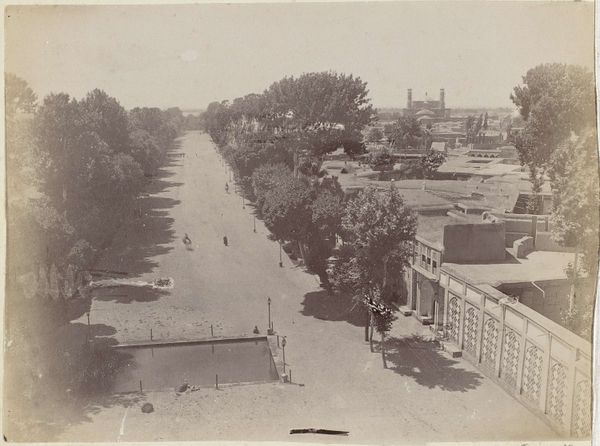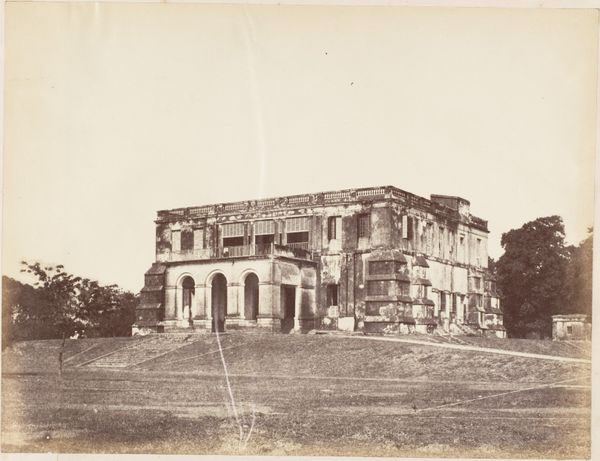
photography, gelatin-silver-print
#
landscape
#
photography
#
orientalism
#
gelatin-silver-print
#
monochrome photography
#
cityscape
#
street
Dimensions: height 188 mm, width 320 mm, height 367 mm, width 414 mm
Copyright: Rijks Museum: Open Domain
Editor: Here we have Samuel Bourne's "View of Hazratganj in Lucknow, Uttar Pradesh, India" taken between 1864 and 1866, rendered as a gelatin-silver print. It's quite stark and still, capturing a moment in time. What do you see in this piece, considering its historical context? Curator: The starkness is precisely where its power lies. Look at the visible labour embedded in the production of this image. The collodion process required a mobile darkroom. Think about the sheer logistical effort in transporting heavy equipment through India in the 1860s, the sourcing of materials, the chemical processes. Editor: So you are speaking about how that physicality and industrial background informs our reading? Curator: Exactly! The production of this photograph is interwoven with British colonial power, reflecting not just a view of India but also a perspective shaped by resources, technology and the prevailing gaze of the time. It becomes an artifact of empire. The choice of a gelatin silver print - then cutting edge technology speaks volumes. How readily would this have been accessible to local practitioners? What were the working conditions of the people making photographic chemicals, whether in India or in Britain, during the industrial revolution? Editor: That's a perspective I hadn't fully considered – focusing on the means by which the image was created, rather than just its visual content. Curator: Consider the labor: Bourne's and his assistants’. And also the implied labor that constructed this place, or those that came before, paving that very street for him to capture. It's about the network of production. Editor: Thinking about photography this way – as a material product deeply embedded in its social and economic moment – really changes how I see these older images. Curator: Indeed. It’s not just about aesthetics; it's about understanding the entire system that made that aesthetic possible. It reminds us that art is always a product of its material circumstances.
Comments
No comments
Be the first to comment and join the conversation on the ultimate creative platform.
